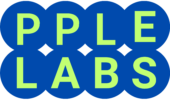Choosing the right development framework can feel like picking the perfect tool from an ever-expanding toolkit. The right choice can streamline your development process and enhance your project’s performance. Let’s dive into some of the most popular development frameworks available today, breaking them down into frontend, backend, full-stack, and mobile categories.
. . .
Popular Frontend Frameworks
React
Overview
React, developed by Facebook, is a powerful JavaScript library for building dynamic user interfaces. It’s particularly well-suited for single-page applications (SPAs).
Key Features
- Virtual DOM: Optimizes updates for better performance.
- Component-Based Architecture: Allows for reusable UI components.
- Strong Community Support: Extensive resources and tutorials.
Pros and Cons
Pros:
- High performance due to virtual DOM.
- Reusable components streamline development.
- Large, active community for support.
Cons:
- Steeper learning curve for newcomers.
- Often requires additional libraries for complete functionality.
Explore more about React on the official website.
. . .
Angular
Overview
Angular, maintained by Google, is a robust framework for building client-side applications with HTML and TypeScript.
Key Features
- Two-Way Data Binding: Ensures synchronization between model and view.
- Dependency Injection: Enhances modularity and testability.
- Comprehensive Suite of Tools: Includes everything needed for development.
Pros and Cons
Pros:
- Rich feature set out-of-the-box.
- Strong community and corporate backing.
- Powerful CLI for managing projects.
Cons:
- Complexity can be overwhelming.
- Performance issues with larger applications.
Learn more about Angular on the Angular website.
. . .
Vue.js
Overview
Vue.js is a progressive JavaScript framework for building user interfaces. Unlike monolithic frameworks, Vue is designed to be incrementally adaptable.
Key Features
- Reactive Data Binding: Keeps your data in sync.
- Component-Based Architecture: Encourages reuse and modularity.
- Easy Integration: Seamlessly integrates with existing projects.
Pros and Cons
Pros:
- Gentle learning curve.
- Flexible and versatile.
- Excellent documentation.
Cons:
- Smaller community compared to React and Angular.
- Less corporate backing.
Discover Vue.js on the official Vue.js site.
. . .
Popular Backend Frameworks
Django
Overview
Django is a high-level Python web framework that encourages rapid development and clean, pragmatic design.
Key Features
- ORM (Object-Relational Mapping): Simplifies database interactions.
- Built-in Admin Interface: Saves development time.
- Security Features: Built-in protection against common vulnerabilities.
Pros and Cons
Pros:
- Fast development speed.
- Scalable and secure.
- Comprehensive documentation.
Cons:
- Monolithic nature.
- Can be overkill for smaller projects.
Learn more about Django on the Django website.
. . .
Ruby on Rails
Overview
Ruby on Rails, often simply Rails, is a server-side web application framework written in Ruby.
Key Features
- Convention over Configuration: Streamlines development processes.
- DRY (Don’t Repeat Yourself) Principle: Reduces redundancy.
- Active Record: Simplifies database interactions.
Pros and Cons
Pros:
- Developer-friendly.
- Strong community.
- Fast prototyping.
Cons:
- Performance issues with high-traffic applications.
- Steep learning curve for non-Ruby developers.
Explore Ruby on Rails on the official Rails website.
. . .
Express.js
Overview
Express.js is a minimal and flexible Node.js web application framework providing a robust set of features for web and mobile applications.
Key Features
- Middleware for Request Handling: Enhances modularity.
- Simplified Routing: Easy to use.
- Extensive Third-Party Plugins: Enhances functionality.
Pros and Cons
Pros:
- Lightweight and fast.
- Highly customizable.
- Strong Node.js integration.
Cons:
- Minimalist approach requires more setup.
- Limited built-in features.
Discover more about Express.js on the Express.js site.
. . .
Full-Stack Frameworks
Meteor.js
Overview
Meteor.js is a full-stack JavaScript platform for developing modern web and mobile applications.
Key Features
- Real-Time Data Synchronization: Keeps data updated in real-time.
- Built-in Package Manager: Simplifies dependency management.
- Integrated with MongoDB: Seamless database integration.
Pros and Cons
Pros:
- Real-time updates by default.
- Easy to learn and use.
- Strong ecosystem.
Cons:
- Limited to MongoDB.
- Performance issues with large datasets.
Learn more about Meteor.js on the official Meteor site.
. . .
MEAN Stack
Overview
The MEAN stack consists of MongoDB, Express.js, Angular, and Node.js, offering a full-stack JavaScript solution for building dynamic web applications.
Key Features
- Single Language for Client and Server: Enhances development efficiency.
- Flexible and Scalable: Suitable for a variety of applications.
- Open-Source: Strong community and resources.
Pros and Cons
Pros:
- JavaScript throughout.
- Scalable and high-performance.
- Strong community support.
Cons:
- Complexity in managing different components.
- Requires deep understanding of JavaScript.
Discover more about the MEAN stack on the MEAN.io website.
. . .
MERN Stack
Overview
The MERN stack is similar to MEAN but uses React instead of Angular, offering a modern, front-to-back JavaScript framework.
Key Features
- Uses React for Frontend: Enhances flexibility and performance.
- High Performance and Flexibility: Suitable for various applications.
- Full-Stack JavaScript Solution: Consistent language use.
Pros and Cons
Pros:
- Flexible and scalable.
- Strong community support.
- React’s component-based architecture.
Cons:
- Steeper learning curve for beginners.
- Integration challenges between components.
Learn more about the MERN stack on the MERN stack website.
. . .
Mobile Development Frameworks
React Native
Overview
React Native, developed by Facebook, is a popular framework for building mobile applications using JavaScript and React.
Key Features
- Code Reuse Across iOS and Android: Enhances development efficiency.
- Fast Refresh for Instant Feedback: Speeds up development.
- Strong Community Support: Extensive resources and tutorials.
Pros and Cons
Pros:
- Cross-platform development.
- High performance.
- Reusable code.
Cons:
- Performance issues with complex animations.
- Requires knowledge of native development.
Discover React Native on the official React Native site.
. . .
Flutter
Overview
Flutter, developed by Google, is an open-source UI software development toolkit for building natively compiled applications for mobile, web, and desktop from a single codebase.
Key Features
- Single Codebase for All Platforms: Simplifies development.
- Rich Widget Library: Enhances UI development.
- Hot Reload for Quick Iterations: Speeds up testing and development.
Pros and Cons
Pros:
- High performance.
- Beautiful, customizable UI.
- Fast development cycles.
Cons:
- Larger app size.
- Limited libraries and plugins compared to native.
Learn more about Flutter on the Flutter website.
. . .
Ionic
Overview
Ionic is a complete open-source SDK for hybrid mobile app development, using web technologies such as HTML, CSS, and JavaScript.
Key Features
- Cross-Platform Development: Reduces development time.
- Extensive Library of Plugins: Enhances functionality.
- Strong Community Support: Numerous resources and tutorials.
Pros and Cons
Pros:
- One codebase for multiple platforms.
- Rich set of UI components.
- Easy integration with Angular.
Cons:
- Performance issues with complex apps.
- Dependent on WebView performance.
Discover more about Ionic on the Ionic website.
. . .
Criteria for Choosing a Framework
Choosing the right framework depends on several factors. Here’s what you should consider:
Project Requirements
Understand the specific needs of your project. Different frameworks excel in different areas, so choose one that aligns with your project goals.
Learning Curve
Consider the time and effort required to learn the framework. Some frameworks have a steeper learning curve than others.
Community Support
A strong community can provide invaluable resources, plugins, and support. Frameworks with active communities tend to have more tutorials, forums, and third-party tools.
Performance
Evaluate the performance capabilities of the framework. Some frameworks are better suited for high-performance applications than others.
Scalability
Think about the future. Will the framework be able to handle your application as it grows and scales?
. . .
Conclusion
In the ever-evolving landscape of web and mobile development, choosing the right development framework is crucial for success. Each framework offers unique benefits and caters to different project needs. By understanding the strengths and weaknesses of each framework, you can make an informed decision that best suits your project’s requirements.
Final Thoughts
When selecting a development framework, consider the nature of your project, your team’s expertise, and long-term maintenance requirements. Whether you choose a frontend powerhouse like React, a robust backend framework like Django, or a versatile mobile solution like Flutter, each has its place in the developer’s toolkit.
FAQs
- What is the easiest frontend framework to learn for beginners?
- Vue.js is often recommended for beginners due to its gentle learning curve and excellent documentation.
- Which framework is best for high-performance applications?
- For high-performance applications, React and Express.js are excellent choices due to their efficient rendering processes and lightweight nature.
- Can I use multiple frameworks in one project?
- Yes, many projects use a combination of frameworks. For example, you can use React for the frontend and Express.js for the backend.
- What is the best framework for building mobile applications?
- React Native and Flutter are top contenders for mobile application development due to their cross-platform capabilities and performance.
- How do I choose the right framework for my project?
- Consider your project requirements, learning curve, community support, performance needs, and scalability. Evaluating these criteria will help you make an informed decision.


Leave a Reply